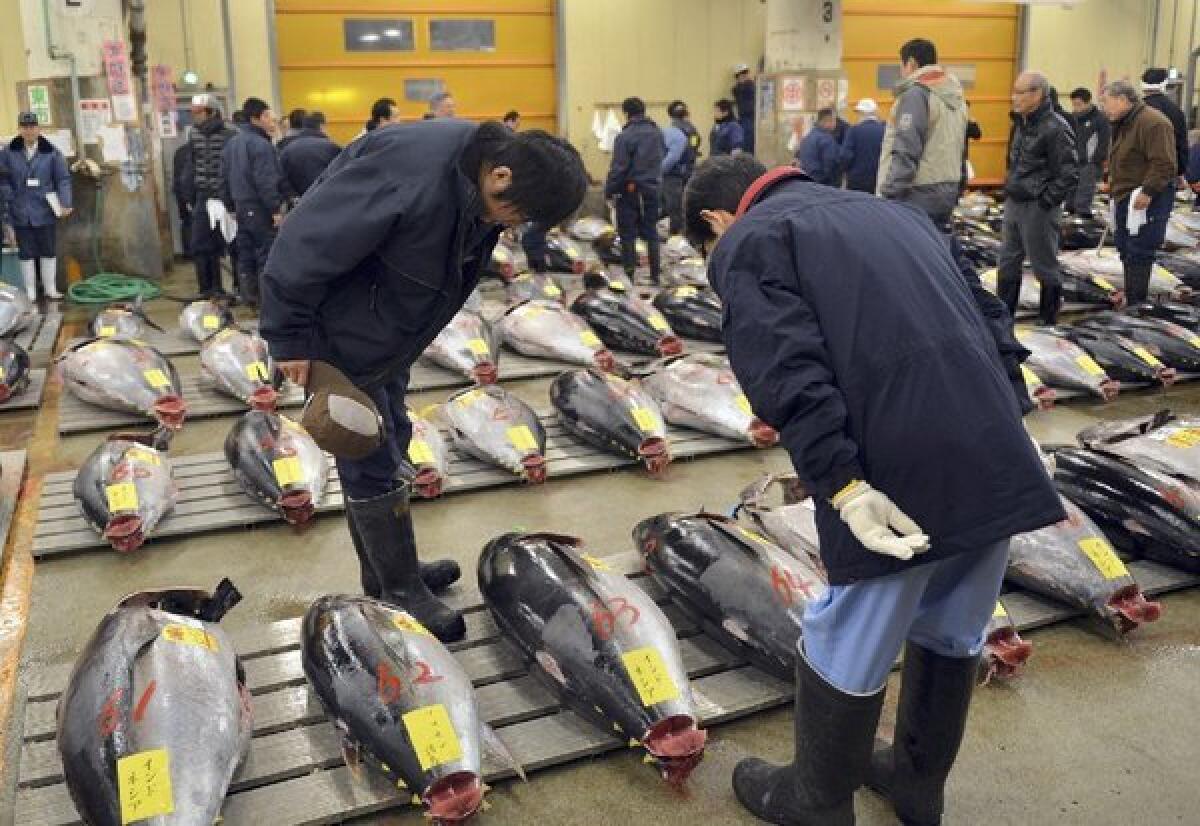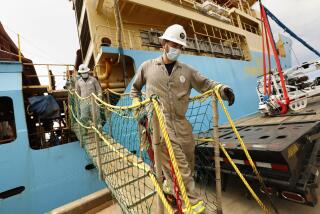Scientists to eaters: Don’t freak out over Fukushima fish

A team of scientists who have been tracking radiation in bluefin tuna since the 2011 tsunami that crippled the Fukushima Daichi power plant have a message for fearful American eaters: Stop worrying about the health effects of eating fish that carried the radiation from Japan to U.S. shores.
“Fears regarding environmental radioactivity, often a legacy of Cold War activities and distrust of governmental and scientific authorities, have resulted in perception of risks by the public that are not commensurate with actual risks,” wrote marine biogeochemist Nicholas Fisher of Stony Brook University in New York and his co-authors in Monday’s online edition of the journal Proceedings of the National Academy of Sciences.
Fisher and his colleagues analyzed measurements of radioactive cesium from Fukushima in bluefin tuna caught off the California coast to estimate the dose of radioactivity a person might receive from eating the tuna. (For more on this monitoring and the work of scientist Dan Madigan, who uses the cesium measurements to study tuna migration, check out the Los Angeles Times story “Radioactive tuna from Fukushima? Scientists eat it up,” in the related links at left.)
The team reported that a 7-ounce, restaurant-size serving of Pacific bluefin tuna contaminated with cesium at the level recorded in fish caught off the coast of San Diego in August 2011 delivered a 7.7 nanosievert dose of radiation -- about 5% of the dose one would get from eating a garden-variety banana. Bananas contain a naturally occurring isotope of potassium, they wrote.
A hypothetical fisherman who consumed about five times as much fish as the average American would get a dose of around 2.8 millisieverts over a year, of which only 4.7 microsieverts would come from cesium, and Fukushima. That’s about the same amount of radiation a person receives when getting a dental X-ray, the team wrote. The increased probability of developing a fatal cancer for the hypothetical fisherman was 0.00002%, the equivalent of two additional cancers per 10 million people eating the relatively larger amount of fish.
There are higher levels of contamination in fish in Japanese waters, the team reported -- especially among bottom-dwelling fish. And health effects of very low amounts of radiation are not altogether understood. Still, the team said, there is little cause for worry when it comes to Fukushima radiation and eating U.S. fish.
“This study shows that the committed effective dose received by humans based on a year’s average consumption of contaminated Pacific bluefin tuna from the Fukushima accident is comparable to, or less than, the dose we routinely obtain from naturally occuring radionuclides in many food items, medical treatments, air travel and other background sources,” Fisher and his co-authors wrote.
Return to the Science Now blog.
twitter.com/@LATerynbrown







